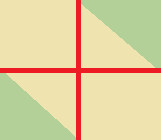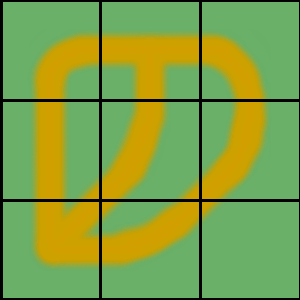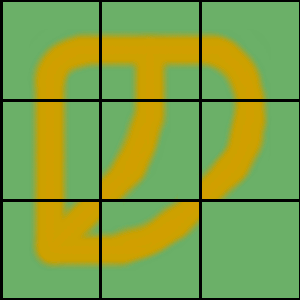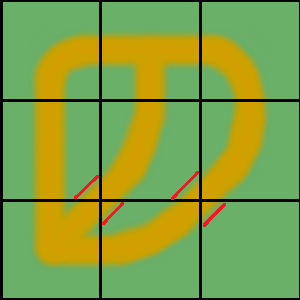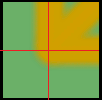Roads that turn at only 90 degrees seem unnatural, but rendering 45 degree turns is turning into a major headache, because it means that roads cut diagonally across tiles and leave pieces of themselves in neighboring tiles. In addition to having textures to render all the various turns an intersections, we also need every combination of nearby roads sticking out in the corners of the tile. In total that seems to be 4096 road tiles just to cover all the possibilities, even when we restrict roads to only going tile-center to tile-center.
We can save memory by doing some flips and rotations in UV coordinates, but I estimate we'd still need dozens of tiles. We can also save some effort by making the tiles transparent beyond the edges of the road, and then layer together multiple tiles when appropriate, either in pre-processing or in the shader. Whatever we do, it is becoming a major headache for something which seems to be so simple in concept. Am I somehow approaching this problem from the wrong direction?


